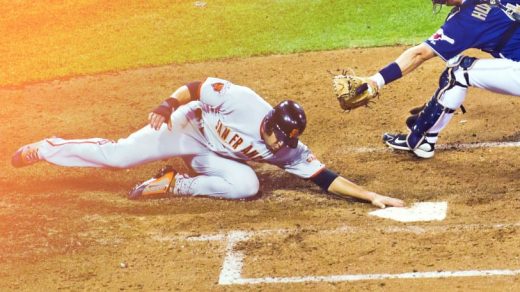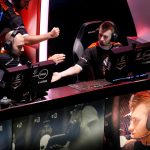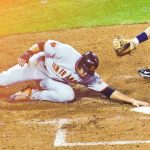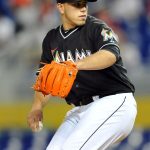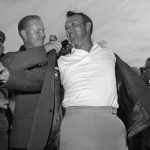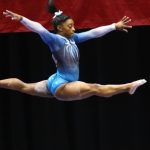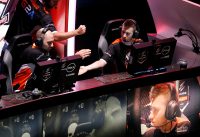How Neuroscience Might Help The San Francisco Giants Win The World Series
The next time a San Francisco Giant hits a game-winning home run or turns a great double play to end a rival’s rally, you may be able to thank neuroscience.
Today, Halo Neuroscience, a San Francisco startup that’s developed a device aimed at boosting the performance of athletes, announced it has officially been helping the Giants get the most out of its players.

The device, the Halo Sport, stimulates the brain’s motor cortex, energizing motor neurons, which then send athletes’ muscles stronger signals, allowing them to get more powerful and efficient with every training rep.
The Halo Sport, which looks almost exactly like a pair of headphones, isn’t new. But Halo hasn’t previously revealed much about its partnerships with any professional sports franchises, especially not ones that have progressed beyond the experimental stage.
The Giants, with their proximity to Silicon Valley, are exposed to lots of “intriguing technology that could be used to improve athletic performance, says Geoff Head, the team’s sports scientist. But before jumping at any of that tech, the three-time World Series champions “like to do our homework.”
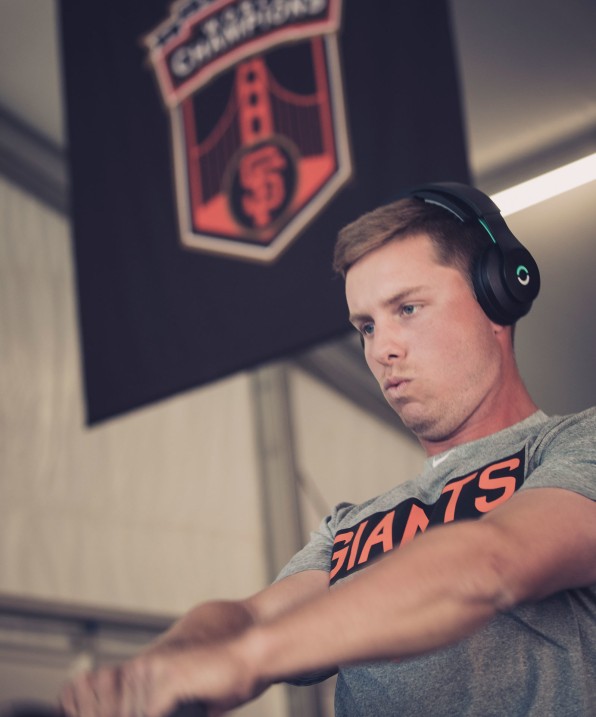
Last season, Head says, the Giants conducted a two-week trial involving 18 top minor league prospects at the team’s off-season conditioning camp. The idea, he explains, was to give nine of the players Halo Sports and compare the results of their training and workouts with nine players who didn’t get the devices but went through the exact same conditioning.
Afterwards, he says, the team “found there to be significant-enough improvement results in the Halo group compared to the control group to where it opened up our eyes” to the device’s value.
To be sure, the improvements were small–on the order of 1% to 2%. “But with these athletes at the major league level,” Head says, “that’s sometimes enough to be the difference between winning and losing.”
Based on those trials, the Giants signed a formal partnership with Halo Neuroscience and have been utilizing the startup’s devices during the current spring training at both the major league level and for players at four different levels of the minor leagues.

According to Head, Halo cofounder Daniel Chao had explained that the peak benefit of the company’s device comes in the 60-to-90-minute window after wearing it, a data point that matched what the team had learned from its in-house study.
“The greatest improvements we found in the players in the [test] group,” he says, “were the skills work we were doing when they were wearing the Halo headset. As soon as they players took off the headsets . . . we would get into some advanced mobility work–trying to learn new postures,” speed drills, and so on.
Asked why players didn’t just wear their Halo headsets all day, Head says it’s simply a matter of diminishing returns. When wearing the Halo Sport, the areas you work on receive a higher level of stimulation. “If you constantly stimulate over the course of a day,” he explains, “you’re definitely not going to get as much bang for your buck. It’s like working out all day. You would get the best results in the first part of the day.”
The key for the Giants, as the team seeks to get the most from its use of the Halo Sport, is to figure out which skill set each individual player needs the most work on and have them wear the headset immediately prior to doing that work.
So, for example, if a pitcher is trying to work on changing the arm angle at which he throws, he would want to wear the Halo Sport in the morning in the 20 minutes or so before beginning his 10 a.m. workout. Even after stretching, the pitcher’s throwing session would still be within the device’s 60-to-90-minute effectiveness window.
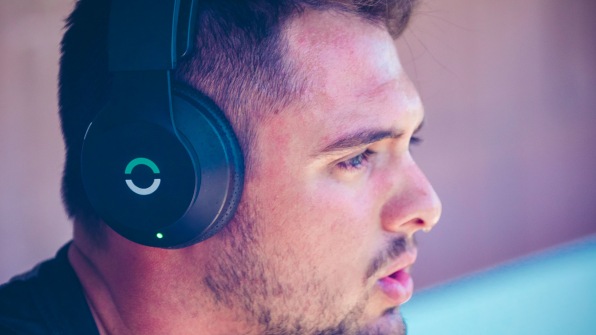
And the benefit may not be limited solely to what a player can do on his own, Head says. In fact, the Halo Sport improves learning as well. So players will be more likely to internalize training feedback from coaches if it happens during that time frame.
The benefit even extends to getting stronger, Head says. So if a player’s biggest weakness is, excuse the pun, his strength, he will do well to wear the Halo Sport prior to doing his weight lifting–and may even want to wear it for the first 20 minutes of those sessions, Head says.
Given that baseball’s regular season hasn’t yet started, it’s too early to tell if Halo’s technology will help the Giants actually get more wins. And even after the games begin, there’s of course no way to know if there was actually a true benefit.
But the results of the Giants’ experiment last season suggest there’s reason to believe that Halo can help the team do better. A baseball season is 162 games. It generally takes around 90 wins to guarantee a playoff spot. Over the course of that span, a 1% to 2% improvement works out to between 1.62 and 3.24 additional wins.
So, Giants fans, if your team makes the playoffs by three wins or less, there’ll be a reasonable argument to be made that it’s due to neuroscience.
(54)

